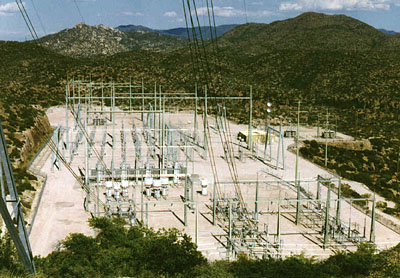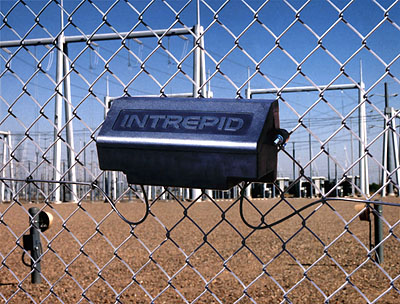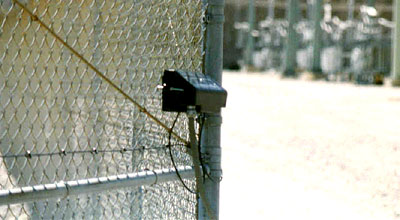
There will always be Bad Guys.
That’s one aspect of the security business that stays the same. But some days, doesn’t it feel like everything else is changing?
In our post-9/11 world, we suddenly have very different kinds of security threats, with unprecedented risks of terrorists and extremist attacks on America’s infrastructure. That can create a whole new mind-set for many security professionals.
The other big change, of course, is technology. Today’s security systems
- microwave, computerized, digital, automated, interfaced and so on
- have totally altered the landscape of how things are done, and it’s a process that continues to evolve, sometimes way too quickly: Today’s breakthrough might be tomorrow’s old news.
“We’re always trying to get the education we need to keep up-to-date, because the technology changes so fast,” says security specialist Paul Ramirez. “We don’t want to be chasing technology. We want equipment that will let us go into the future without being outdated… something that’s going to be good for our company, and is going to meet the standards we have set.”
Ramirez is the Senior Security Systems Technician for the Salt River Project Power, a public power utility serving more than 800,000 electric customers in the greater Phoenix metropolitan area. Salt River Project (SRP) covers an area of almost 3000 square miles, and Ramirez’ security responsibilities include a number of sites such as large power plants and generating stations, including thermal, nuclear and hydroelectric sources. SRP also delivers water to a large part of central Arizona, using an extensive system of reservoirs, canals and irrigation lines. Understandably, security is a major concern at SRP, and it represents a tremendous range of applications.
“Every site is different,” Ramirez explains. “We have a standard set to follow, but each location is unique. You have to look at the assets you want to protect, and then assess the environment to evaluate what we need to protect them.”
Finding The Best System
As America’s need for better security has coincided with advances in technology, it has led to more new products from more suppliers, which can also lead to more complexity and more challenges for security professionals. An efficient, integrated security system needs to have all the components work well together.
Security for SRP entails a huge range of services and systems, given the extremely diverse types of facilities and locations the company serves: urban industrial, rural, residential, remote sites with mountain winds, desert heat, animals, etc. With so many different needs, and so many available systems, what does it take to coordinate and streamline a program cost-effectively?
Jim Trujillo is a Senior Control Engineer for SRP, and he works with Ramirez to help evaluate and implement the company’s various security systems.

“Again, it falls within your assessment of a particular site, and identifying the equipment we think we’re going to need there,” explains Trujillo. “Then Engineering follows up to provide the design and estimations accordingly, based on needs and budget. We try to standardize the systems simply because we support them all internally,” he says.
“We like to see what’s available in the latest technology,” Trujillo continues, “and see if it fits in with our applications.”
But when there are many good products to choose from, and an equal number of factors to consider, finding the right systems can obviously be tricky. To facilitate their decision-making, Trujillo and Ramirez go through a lot of research and specific product demonstrations, and when possible, they conduct a real on-site test of products they’re considering.
“When we identify the equipment we think we need, we often try to borrow some and take it out to the actual site to see what the results will be,” Trujillo says. “Then we take steps to see how we’re going to integrate it with our security operations center, and we start involving ourselves in communications. We procure all the materials and do an end-to-end installation inhouse,” he says. “We also conduct a bench test to make sure it’s going to work before we actually implement it.”
“Jim and I will get together with our control C & M technicians and test a lot of products prior to investing in them,” adds Ramirez.
“From an engineering standpoint, we also always look at the experience we’ve had with the systems currently in place,” Trujillo says. “We evaluate how the components of the system have held up, what experiences we have had with the manufacturer and how supportive they were. A lot of the evaluation is based on the life expectancy of some of the equipment we currently operate.”
Integration Is Key
As they evaluate various manufacturers and components, the security team at SRP is constantly aware of the need to have systems which can be integrated and work together.
“The equipment that we had out there was a various mix of models, and now we’re trying to standardize,” says Ramirez. “We want to get it all integrated, so we know what equipment will work with our existing access control and CCTV systems. We also have to keep in mind what kind of code we have to translate with the piece of equipment we need at that site, bandwidth situations and issues like that.”
“We definitely want to automate and integrate each of the components together as best we can,” agrees Trujillo, “because a big issue, of course, is response time.”
With SRP’s vast network, it’s critical to have intrusion detection at perimeters of remote sites tied in to central CCTV, for example, as well as remote monitoring and control of the power grid. The various security functions must be compatible and easily coordinated.
That’s one reason SRP has been working with Southwest Microwave Inc. of Tempe, Arizona for over six years. Specifically, SRP employs a Southwest Microwave perimeter system known as Intrepid — a sophisticated MicroPoint™ microprocessor-linked cable that’s tie-wrapped to a chain link fence to detect significant vibrations and precisely locate the point of intrusion.
“At one of our most remote sites, that system has proved very useful,” Ramirez says. “Up there we’ve got high winds, snow and a lot of cattle from the ranches around it, and our old system was constantly giving us false alarms. Southwest Microwave worked with us to filter out a lot of the nuisance alarms, and give us a reliable system at this remote site. It’s tied in with our CCTV system, so whenever we get an alarm, the cameras are immediately set to the zone where the alarm occurred.”
“I’m happy with the system because it’s integratable,” adds Trujillo. “They can actually interface the Intrepid cable technology to their microwave technology to create an entire perimeter system. Let’s say you use the Intrepid system on the fences, but need to use microwave across the gates. They interface the two together to create a closed perimeter,” he explains. “Then they can also provide interfaces via relay modules to give alarm conditions to our matrix, which is our CCTV”
Fine-Tuning Security
As new technology continues to come along, it also helps to make good systems better. Another factor in SRP’s choice of the Intrepid system is that its level of sensitivity can be adapted to changes in conditions, such as higher winds. That helps to further reduce the problem of false alarms.
“I think the best thing Southwest Microwave has done is to design this cable technology to allow sensitivity adjustment,” says Trujillo.
“The systems are very reliable, and the fact we’ve been able to eliminate a lot of nuisance alarms is significant,” Ramirez says. “We’ve been able to integrate Southwest Microwave’s systems into ours quite easily; the installations are easy for our technicians. But most of all, we get the support we need.”

“We see them as part of our team,” agrees Trujillo.
Security professionals are under more scrutiny and performance pressure than ever before, and having a large number of vendors doesn’t simplify anything. But as Jim Trujillo and Paul Ramirez have shown at SRP, making smart decisions depends on accurate needs assessment, thorough product research and evaluation, effective comparative trials, and finding a reliable manufacturer with excellent products and support.
“You have to have a direction where you’re headed,” Ramirez adds, “otherwise you’re getting pulled in every direction.”
 Jim Trujillo is a Senior Control Engineer for SRP who is challenged with integrating several security technologies together to protect power generating and transmission facilities.
Jim Trujillo is a Senior Control Engineer for SRP who is challenged with integrating several security technologies together to protect power generating and transmission facilities. Paul Ramirez: Paul Ramirez is a Senior Security Systems Technician for Salt River Project, a public power utility serving more than 800,000 electric customers in the greater Phoenix metro area.
Paul Ramirez: Paul Ramirez is a Senior Security Systems Technician for Salt River Project, a public power utility serving more than 800,000 electric customers in the greater Phoenix metro area.For further information on Southwest Microwave’s INTREPID system, visit www.southwestmicrowave.com







